Harnessing machine learning in marketing: Benefits, use cases and best practices
Published on May 09, 2025/Last edited on November 11, 2025/15 min read
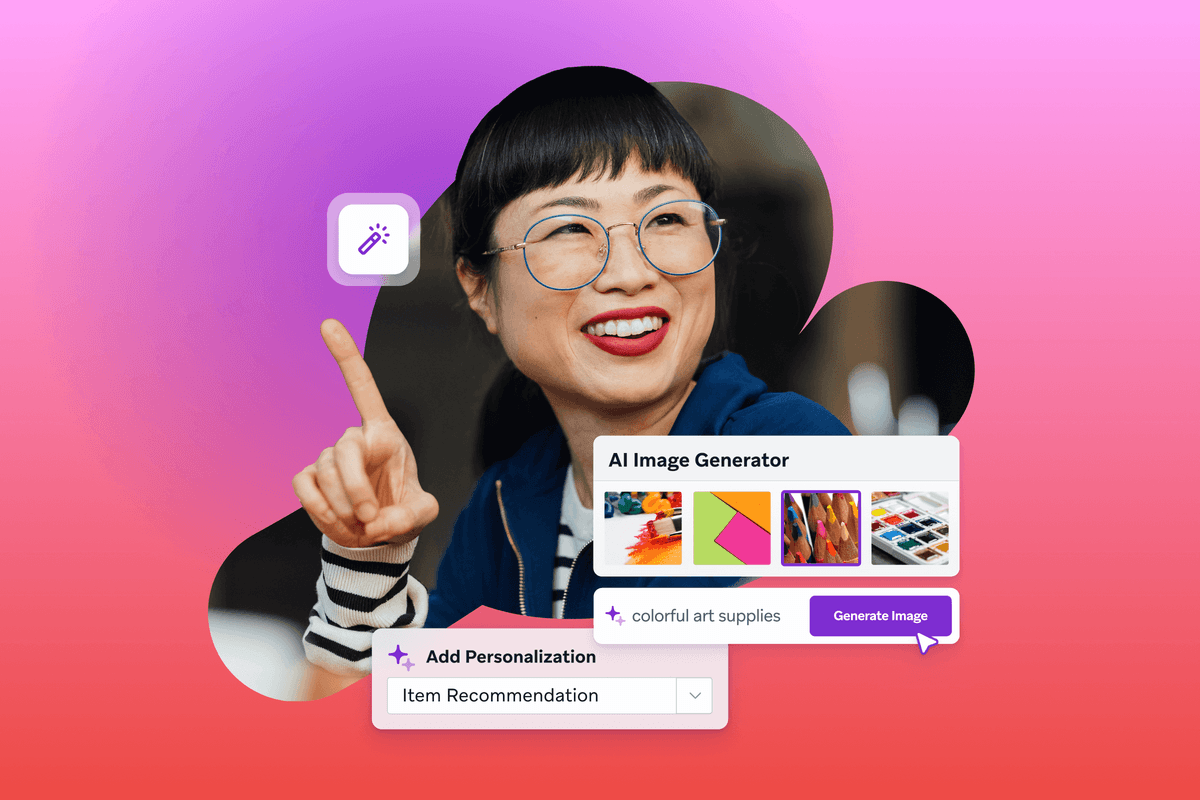
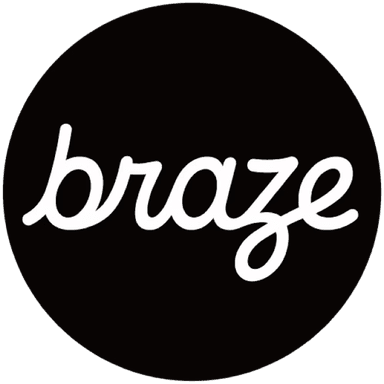
Team Braze
Marketing teams are tasked with meeting customers’ rising expectations yet often without the resources to do so. AI and machine learning (AI/ML) can change that, helping to power the next generation of the customer experience. AI/ML can identify patterns, power real-time decisions, automate actions, and build smarter customer journeys from the ground up.
From predicting behavior to personalizing outreach, machine learning in marketing is already transforming how teams work and grow.
This guide breaks down what machine learning is, how it differs from AI, and where it fits in marketing your brand. You’ll learn about the core types, real use cases and how to bring it into your strategy. You don’t need a team of data scientists. Customer engagement tools like BrazeAI™ can help you move faster and personalize at scale.
Contents
- What is machine learning?
- Advantages of machine learning and marketing
- Types of machine learning for marketing
- How does machine learning differ from AI?
- How to apply machine learning in marketing
- Practical use cases from Braze of machine learning
- How can machine learning help your marketing strategy?
- Final thoughts
- Machine learning FAQs
What is machine learning?
Machine learning is a branch of artificial intelligence that trains systems to learn from data and improve over time—without manual programming. Instead of writing rules to tell software exactly what to do, teams train algorithms to recognize patterns, make predictions, and adjust based on new input. Some machine learning models also use natural language processing (NLP) to understand and act on written content, like customer feedback or support queries.
For marketers, machine learning can unlock more responsive, adaptive campaigns. It helps teams shift from rigid, rule-based workflows to systems that evolve alongside customer behavior. Whether you're predicting churn, optimizing send times, or surfacing personalized content, machine learning gives you the tools to act on insight at scale—and in real time.
Advantages of machine learning and marketing
Machine learning gives marketers faster, sharper ways to understand and respond to what customers need. It takes the guesswork out of decision-making and brings a layer of intelligence to each touchpoint.
Here’s what it can do:
Smarter personalization
Train models to tailor messages, recommendations, and offers based on individual preferences and predicted behavior.
Better timing
Use intelligent models to send messages at the moment your customers are most likely to engage.
Improved segmentation
Create micro-segments based on behavior, not just demographics—so your messages hit closer to home.
Faster insights
Algorithms can spot shifts in customer behavior early and adapt your strategy before patterns turn into problems. That means less time spent manually analyzing data and more time acting on what matters.
Higher efficiency
Automate time-consuming tasks like send-time optimization or A/B testing, so your team can focus on strategy.
Types of machine learning for marketing
Different machine learning models solve different problems. Some rely on labeled examples to learn from, while others uncover patterns on their own. Here are four core types to know:
Supervised learning
Supervised models learn from labeled data—where each data point includes the correct outcome. Think of a list of past users where you know who made a purchase and who didn’t. The model uses that history to find patterns and predict future behavior, like forecasting churn or likelihood to convert. It’s especially useful for classification (yes/no) and regression (numerical predictions).
Unsupervised learning
Unsupervised models work with unlabeled data. Instead of training on known outcomes, they explore the dataset to find hidden structures, such as clusters of customers with similar behaviors. This approach can reveal patterns or audience segments you might never spot manually.
Semi-supervised learning
Semi-supervised models combine a small set of labeled data with a larger pool of unlabeled data. It’s a smart workaround when labeling is time-consuming or expensive. For example, you might manually tag a few support interactions, then let the model learn from thousands more. This method strikes a balance between accuracy and efficiency, making it ideal for sentiment analysis, email categorization, and content classification.
Reinforcement learning
Reinforcement models learn by doing. They take actions, receive feedback (like a reward or penalty), and adjust based on outcomes. While not as common in day-to-day marketing, you’ll find it behind dynamic pricing, real-time ad bidding, or adaptive testing strategies.
Choosing the right type of machine learning can help you make the most of your data—whether you're refining an existing campaign or building new automation from the ground up. That kind of learning in marketing creates space for smarter, more responsive strategies.
How does machine learning differ from AI?
People often use “machine learning” and “artificial intelligence” interchangeably, but they’re not quite the same. Artificial intelligence is the broader concept—it refers to any system or machine that mimics human intelligence. That might include reasoning, problem-solving, language understanding, or learning from experience.
Machine learning sits within AI. It’s a specific approach that trains systems to learn from data analysis, spot patterns, and make decisions without being explicitly programmed.
Here’s a simple way to think about it:
- AI is the big-picture goal—build systems that act intelligently.
- Machine learning is one of the methods we use to get there—by giving machines access to data and letting them learn from it.
In marketing, AI might power chatbots, predictive text, or dynamic creative optimization, (for example, creating images, headlines, or CTAs in real time based on who is viewing the ad.)
Machine learning, on the other hand, helps you segment users, predict churn, or personalize the timing and content of messages. Both can support smarter marketing—but machine learning often does the heavy lifting behind the scenes.
Braze features like Intelligent Timing and Predictive Churn rely on machine learning to help teams act in the moment. These features don’t just automate—they adapt, learning from each customer interaction to drive stronger outcomes over time.
How to apply machine learning in marketing
You don’t need a data science team to start using machine learning in your marketing strategy. Many platforms—like Braze—build machine learning directly into tools that marketing, CRM, and growth teams use every day.
Here are a few ways to apply it:
Predict churn before it happens
Machine learning models can spot early signs that a customer is about to disengage. With features like Braze Predictive Churn, which is designed to identify high-risk users, you can trigger targeted win-back campaigns for at-risk users. This type of predictive modeling helps you take action before churn happens—rather than after.
Optimize send times for better engagement
Rather than choosing one send time for everyone, machine learning can find the moment each customer is most likely to engage. Braze Intelligent Timing uses this approach to deliver messages when they’re most likely to hit.
Personalize content at scale
Machine learning helps match content to users based on behavior, preferences, and past interactions. Whether you’re recommending products or tailoring in-app messages, it supports more relevant, timely experiences—without endless manual effort.
Build smarter segments
Instead of relying on static lists, use machine learning to identify meaningful patterns in your customer data. These insights can uncover new audience segments, flag high-value users, or support more personalized journeys.
Automate the heavy lifting
Machine learning takes care of repetitive tasks—like A/B testing or optimization—so teams can focus on creative strategy, not constant tweaking.
When you apply machine learning to your marketing strategy, you shift from reactive to proactive. You start making decisions based on what customers are likely to do next, not just what they did last.
Machine learning in email marketing
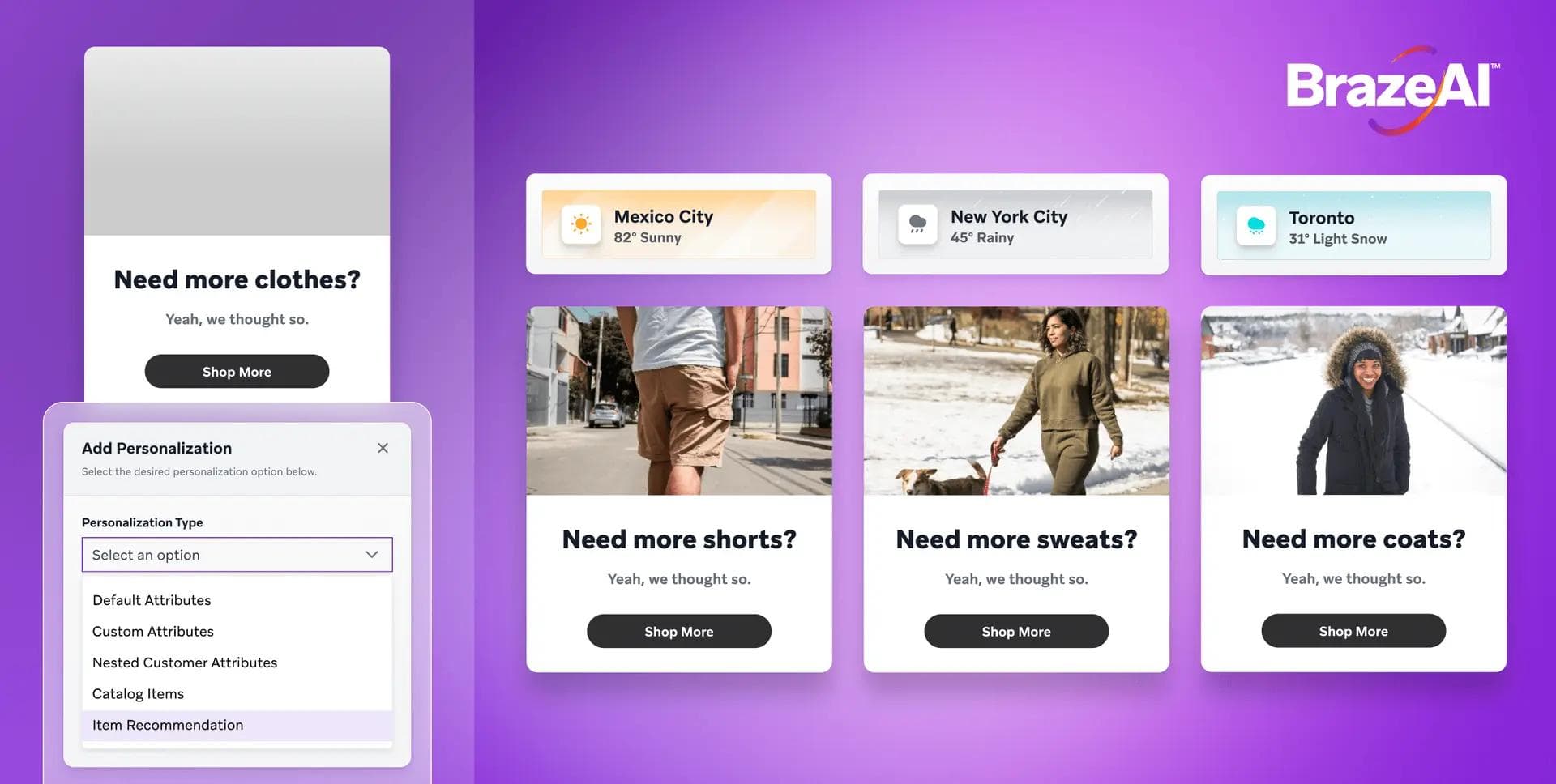
Email continues to be one of the most powerful channels for engagement—and machine learning helps marketers make it smarter. By analyzing user behavior, it can recommend send times, tailor content, and adapt frequency based on each recipient’s likelihood to open or convert. You can turn newsletters, transactional emails and triggered flows into more relevant, results-driven experiences.
99% of marketers say their organizations are already using AI. But what does it mean to use it effectively for customer engagement?
Practical use cases from Braze of machine learning in digital marketing
Machine learning doesn’t have to sit on a roadmap or in a siloed data science team. With tools like Braze, marketers can apply it directly—improving campaign performance, streamlining workflows, and making every interaction more relevant.
Here’s how real brands are already using it and how you can integrate it in your marketing plans, too.
Pizza Hut dishes out a 31% conversion lift with machine learning
Pizza Hut is one of the world’s best-known quick-service restaurant (QSR) brands, with over 19,000 global locations. The brand wanted to modernize how it engaged with digital customers, aiming to drive stronger loyalty and boost conversion across key markets.
The problem
Before adopting Braze in spring 2019, Pizza Hut ran a solid email and SMS program—but the team saw room to improve. Their previous platform lacked mobile-native channels and didn’t provide a unified view of customer interactions across touchpoints. Pulling in the right data was slow and clunky, making it hard to deliver relevant messaging at speed or implement a cross-channel strategy.
To improve the customer experience and bridge that gap, the team aimed to expand into mobile channels and personalize more deeply across the board. But their legacy setup couldn’t support that vision—so they made the switch to Braze.
The solution
Just a few months after migrating to Braze, the Pizza Hut team launched a sophisticated multivariate test powered by their own Multi-Armed Bandit (MAB) machine learning model—something they couldn’t have pulled off on their previous platform.
With easier data integration, the flexibility of Braze Canvas and the ability to build complex dynamic logic using Liquid, the team created highly targeted emails with hundreds of variants. Their MAB algorithm reviewed performance every few days and fed updated insights directly into the campaign, allowing them to optimize strategy in real time.
Since then, they’ve expanded their outreach with push notifications and in-app messages—building a cross-channel program that drives stronger engagement and business impact. The flexibility of the Braze platform has played a major role in helping the CRM team scale their efforts and deliver more personalized customer experiences.
The results
- 21% increase in average user sessions
- 31% increase in conversions
- 24% uplift in revenue per user
- 13% improvement in repeat purchases
By pairing machine learning with real-time segmentation and cross-channel orchestration, Pizza Hut created a more personalized, scalable engagement strategy—one that didn’t sacrifice speed or local nuance.
Ticketek hits the right note with predictive targeting
Ticketek is one of Australia’s largest ticketing platforms, helping fans discover and book live events across sports, music, arts, and entertainment. The brand’s goal is to deliver a smooth, personalized customer experience, from first discovery to final booking.
The problem
With millions of customers and a packed event calendar, Ticketek needed a better way to reach the right people with the right shows. Their existing strategy didn’t support advanced targeting and the team lacked tools to automate personalized outreach at scale. They wanted to boost engagement and drive conversions without overwhelming their audience with one-size-fits-all messaging.
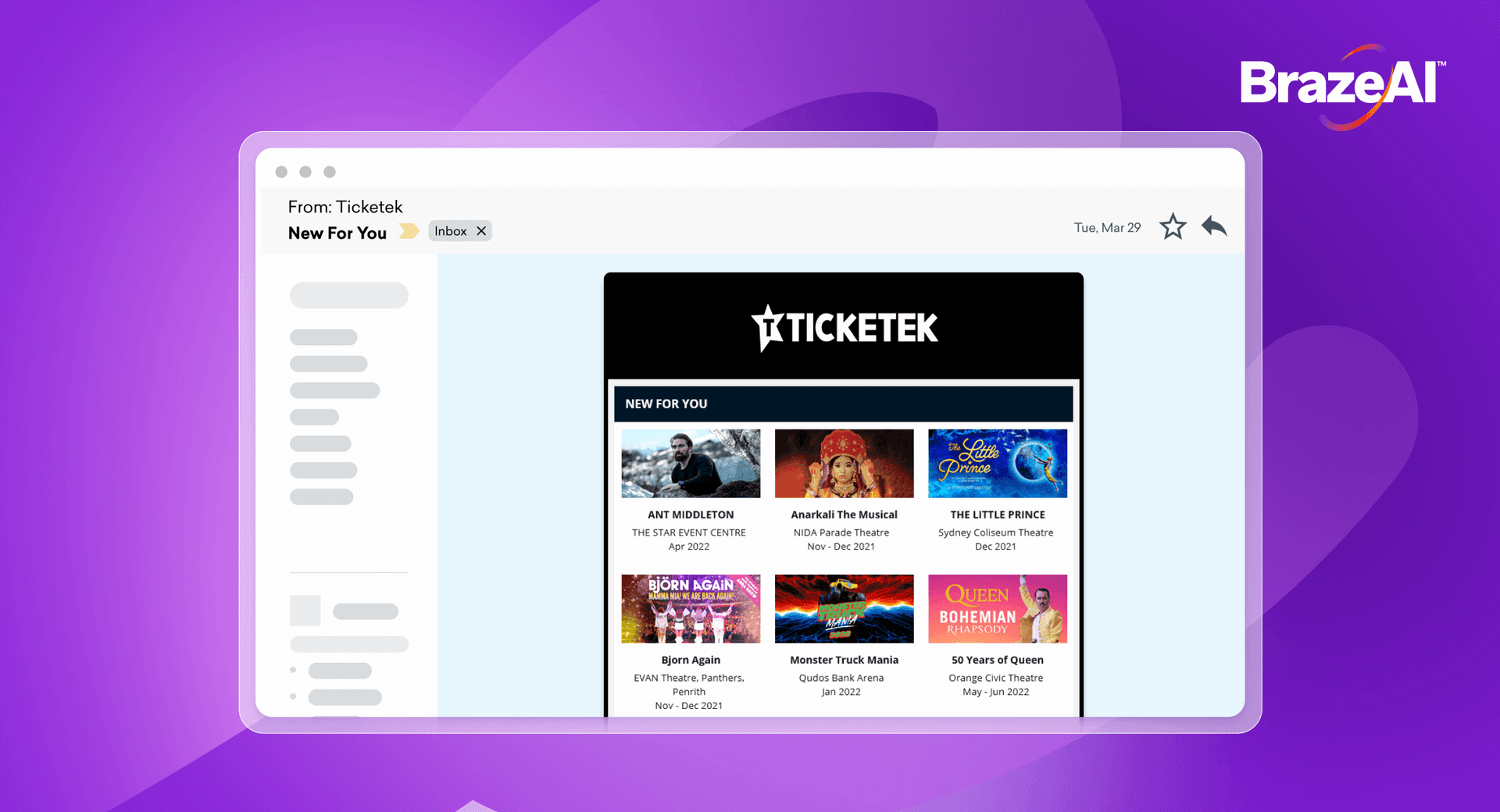
The solution
Ticketek upgraded its Weekly Newsletter emails using Braze Connected Content, pulling in live data from Snowflake to personalize event recommendations. By integrating Amazon Personalize through Braze Alloys partner AWS, the team used machine learning to generate dynamic suggestions for each user—no in-house ML expertise required.
These personalized events appeared directly in the email, with each click feeding back into the system to refine future recommendations. With Braze Content Blocks, Ticketek now automates and manages this experience across all newsletters, delivering consistent, data-driven content at scale.
The results
- 250% lift in conversion rates
- 49% increase in tickets sold per open
- 228% click to convert improvement
By combining known customer data with machine learning–powered recommendations, Ticketek delivered more relevant event suggestions and a smoother user experience. This smarter, data-driven approach led to higher engagement and stronger conversions.
8fit gets predictive with a 3.75X lift in conversions
8fit is a health and fitness app that helps users build sustainable wellness habits through personalized workouts and nutrition plans. With a strong focus on motivation and long-term results, 8fit aims to meet users where they are and keep them engaged on their journey.
The problem
To grow subscriptions and boost conversions, 8fit wanted to personalize outreach without defaulting to broad discounting tactics. The team needed a way to identify users most likely to convert and focus their efforts where they’d have the biggest impact.
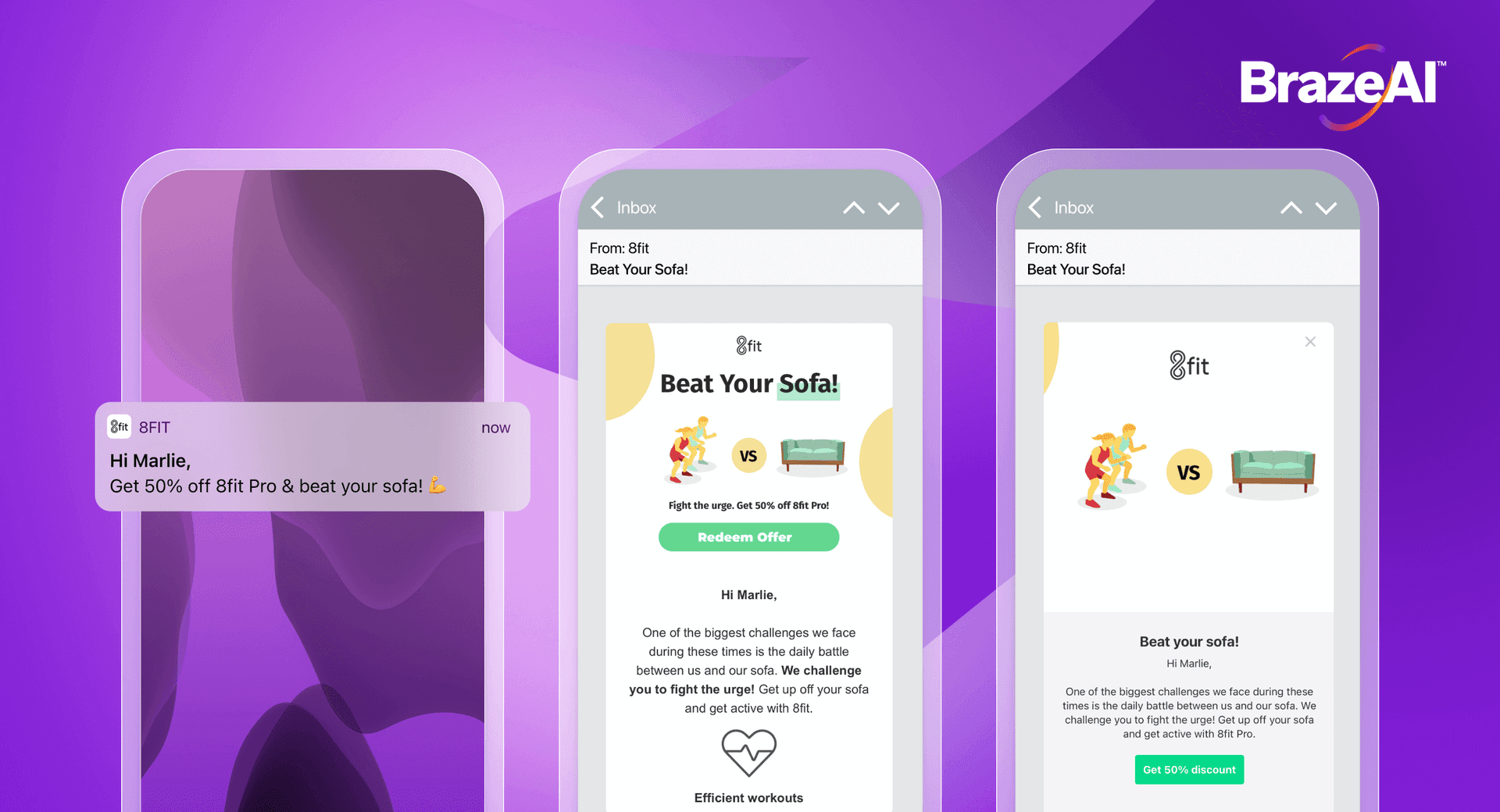
The solution
To improve retention and reduce churn, 8fit focused on turning new subscribers—especially those who signed up via the web—into engaged app users. They chose Braze for its ease of use and ability to manage cross-channel messaging in one place, using email, push and in-app messages to support onboarding and boost engagement.
Working with the Braze team, 8fit used Predictive Purchases—part of Predictive Suite—a machine learning tool that scores users based on their likelihood to buy. They targeted high-scoring users with smaller discounts and reserved bigger offers for low-intent audiences. Through targeted messaging to 1.6 million users, 8fit tested discount levels, channels, and message types, excluding low-likelihood users to improve efficiency. The result was a stronger ROI and smarter, data-driven subscription campaigns.
The results
- 3.75X higher conversion rates compared to other campaign types
- 100,000 fewer emails sent, weekly
- Reduced reliance on discounting
- More efficient use of CRM resources
By using predictive machine learning to guide their strategy, 8fit delivered personalized, high-impact campaigns that drove real results, without overextending their team or budget.
OneRoof lands the perfect timing with a 23% lift in clicks
OneRoof is a New Zealand-based property platform run by NZME. It helps home seekers access real estate listings, property insights, and expert content—all in one place. The goal is to keep users informed, engaged, and coming back as they move through the property journey.
The problem
OneRoof’s marketing team used email, but relied heavily on developers to build and trigger customizations through APIs. Without data integrations or custom attributes, they couldn’t personalize messages or test content effectively. That meant users browsing for homes in Auckland might receive listings for properties in Wellington—nearly 600 kilometers away.
To fix this, the team shifted toward a more marketer-led, multi-channel approach. They built a data strategy focused on declared and inferred customer insights, then segmented audiences and personalized communications based on behavior, preferences and location—making every message more relevant and timely.
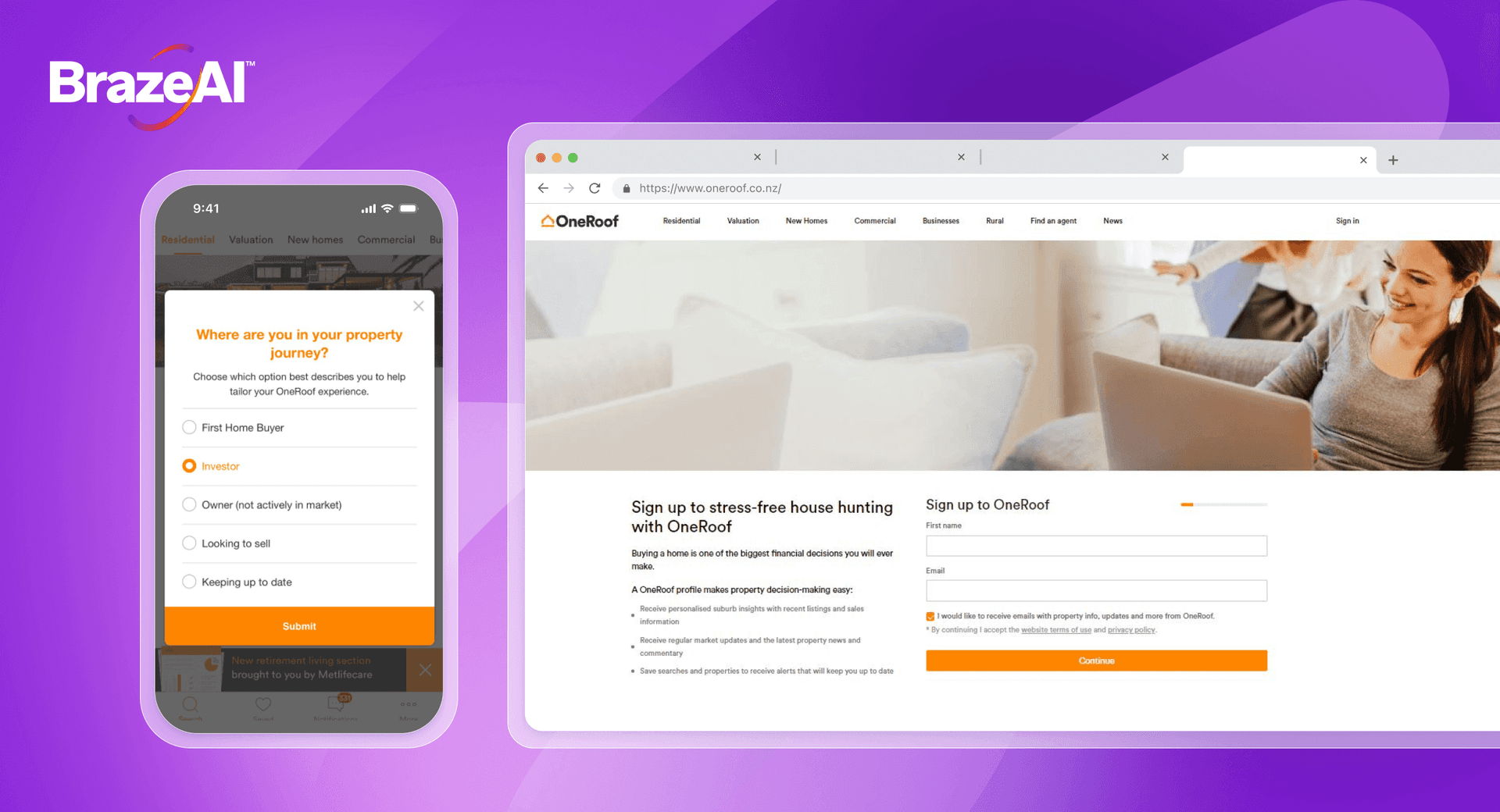
The solution
To create more relevant experiences, OneRoof introduced a Profile Builder that let users share whether they were buying or selling, their stage in the property journey and their preferred locations. These attributes passed directly into Braze, giving the marketing team the foundation to personalize across channels, without relying on developers.
From there, they used Braze Intelligent Timing and machine learning to deliver personalized messages across email and in-app channels, tailoring content based on both declared and inferred data. This powered several new campaigns, each driven by real-time behavioral data and delivered when each user was most likely to engage.
The results
- 77% conversion rate of turning prospects into registered customers
- 23% increase in email click-to-open rate using Braze Intelligent Timing send-time optimization
- 218% uplift in total clicks to property listings with ML-powered dynamic emails and IAMS
- 57% uplift in unique clicks with ML-powered dynamic emails and IAMS
- 50+% user growth year-over-year
By combining AI-powered recommendations with suburb-level personalization, OneRoof replaced generic content with localized, dynamic messaging.
For a closer look at how Braze continues to lead in this space, check out how Braze stays ahead of the curve on AI.
How can machine learning help your marketing strategy?
Machine learning gives your marketing strategy more precision, more speed and more room to grow. Instead of reacting to what already happened, you can anticipate what’s coming and build campaigns that meet customers right where they are.
Here’s how it fits into the bigger picture:
You can move faster
Machine learning cuts through complexity. It helps turn raw data into usable insights, automate repetitive decisions, and act while the window of opportunity is still open.
You can personalize at scale
Whether you're segmenting users, recommending content, or adjusting message timing, machine learning adapts to each customer. That creates experiences that feel personal—even when you’re reaching millions.
You can optimize constantly
The best marketing strategies evolve. Machine learning helps you test, learn, and improve in the background, so your campaigns get smarter over time without needing constant manual input.
You can build stronger customer relationships
When you reach people with the right message at the right moment, you build trust. And when campaigns reflect real needs and interests, you increase customer satisfaction across every touchpoint.
In short, machine learning helps you stop reacting and start anticipating. That shift can unlock better performance, happier customers, and a strategy that adapts as fast as your audience does.
Final thoughts
Every customer action tells a story—machine learning helps you listen better and respond faster. From predicting what someone might do next to personalizing when and how you show up, it adds depth to your strategy without adding complexity.
The brands seeing the biggest results aren’t waiting for a perfect moment to start—they’re building smarter, more responsive journeys right now.
Forward-Looking Statements
This blog post contains “forward-looking statements” within the meaning of the “safe harbor” provisions of the Private Securities Litigation Reform Act of 1995, including but not limited to, statements regarding the performance of and expected benefits from Braze and its products and features. These forward-looking statements are based on the current assumptions, expectations and beliefs of Braze, and are subject to substantial risks, uncertainties and changes in circumstances that may cause actual results, performance or achievements to be materially different from any future results, performance or achievements expressed or implied by the forward-looking statements. Further information on potential factors that could affect Braze results are included in the Braze Annual Report on Form 10-K for the fiscal quarter ended January 31, 2025, filed with the U.S. Securities and Exchange Commission on March 31, 2025, and the other public filings of Braze with the U.S. Securities and Exchange Commission. The forward-looking statements included in this blog post represent the views of Braze only as of the date of this blog post, and Braze assumes no obligation, and does not intend to update these forward-looking statements, except as required by law.
Machine learning FAQs
Machine learning refers to a type of artificial intelligence where systems learn from data, identify patterns, and make decisions with minimal human intervention.
The 4 basics of machine learning are data, algorithms, models, and training—all working together to help systems learn, adapt, and improve over time.
The difference between AI and ML is that artificial intelligence is the broader concept of machines simulating human intelligence, while machine learning is a subset focused specifically on learning from data to make predictions or decisions.
The 4 types of machine learning are supervised learning, unsupervised learning, semi-supervised learning, and reinforcement learning—each suited to different kinds of data and outcomes.
Related Tags
Be Absolutely Engaging.™
Sign up for regular updates from Braze.
Related Content
View the Blog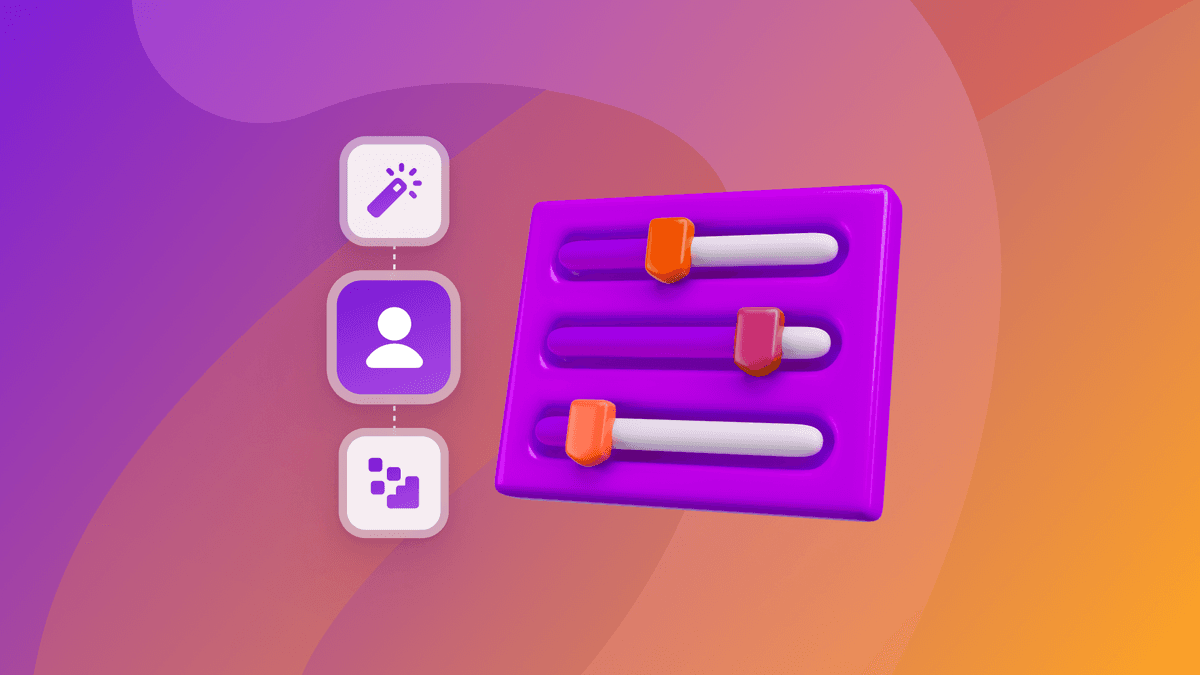
How behavioral marketing turns data into personalized experiences

Team Braze
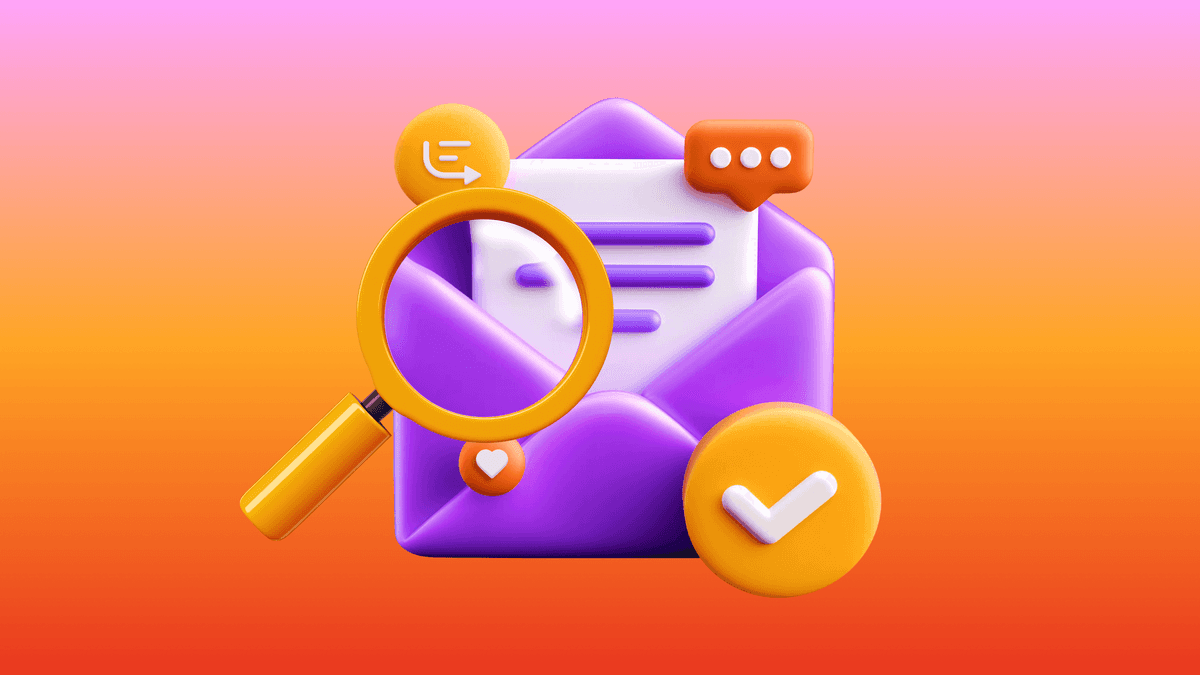
The new inbox reality: How iOS changes are reshaping email marketing

Aparna Prasad
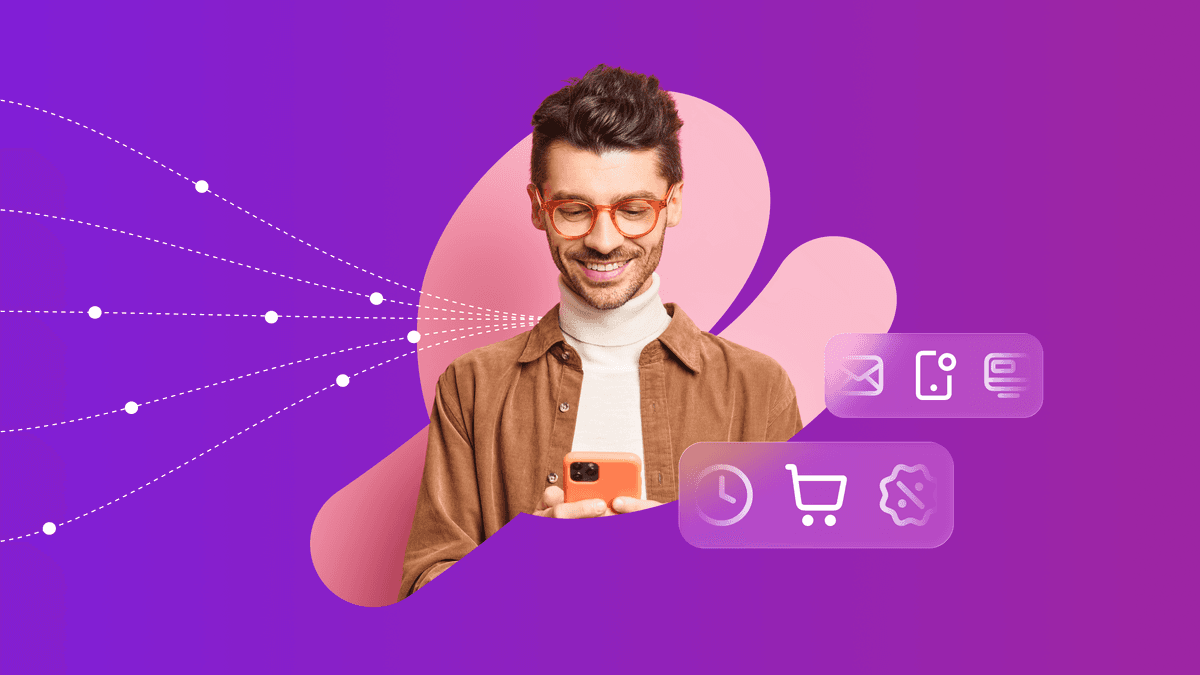
Experience optimization: Turning data insights into better journeys
